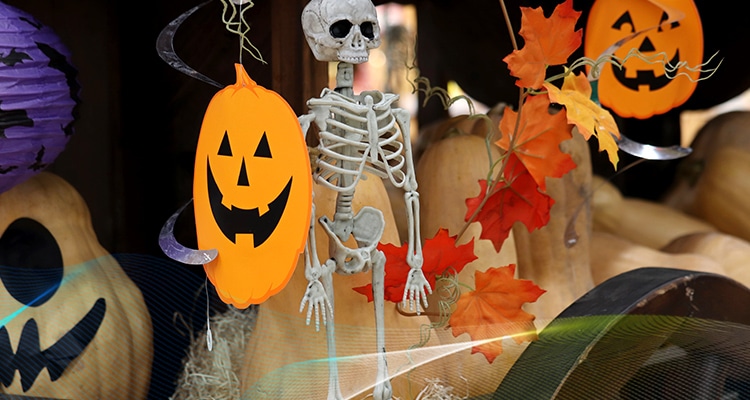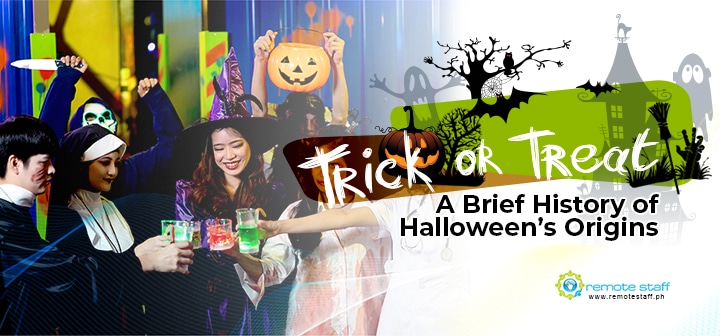Boo! Wow, look at how time flies. It’s already Halloween again. And yes, before you say it, who needs to wait for this occasion to scare themselves when every day is scarier? As the pandemic continues to loom over us, finding a good reason to celebrate is becoming difficult. But celebrate we must, as it allows us to focus on other things aside from work and current events.
Going back to Halloween, although we celebrate it by dressing up in costumes and attending Halloween parties, do we know what it is? Halloween, or All Hallow’s Eve, is an event celebrated the night before All Saint’s Day on October 31. Halloween marks the beginning of Allhallowtide, which lasts until All Souls Day on November 2.
Although this is the origin of Halloween traditions as we know them today, Halloween’s origins as a celebration go back before the rise of Christianity. If you haven’t guessed it yet, I will be discussing Halloween’s Origins in this article.

Halloween’s Ancient and Pagan Origins.
So, where do we begin in our trip back in time? Unfortunately, nobody knows for sure. What is known, however, is that the earliest known root of Halloween goes back to the Celtic festival known as Samhain. Samhain, which is Celtic for End of Summer, is celebrated by the Celts of ancient England and Ireland on November 1.
The Celts believe that during this time, the world of the gods will appear to mortal men. These gods would then play tricks on their followers, so they must disguise themselves and offer sacrifices to protect themselves. If these practices sound familiar to you, then congratulations. These are the origins of the Halloween traditions of wearing scary costumes.

From a Pagan Tradition to a Christian One.
Moving forward to the 7th Century CE, the reigning pope of the time, Pope Boniface IV, established All Saints Day. All Saints Day was initially set on May 13 but became November 1 a century later. Scholars believe that this occurred because the Church wanted to replace Samhain with a Christian event.
And with this moving of dates, the night before November 1 became known as all hallows eve, or as we would later call it, Halloween. The Church adopted many of the customs that Samhain had but put a Christian touch on it. Instead of the gods entering the mortal world, they became the souls of the deceased. And people now pray for the eternal rest of these souls.

Halloween’s Arrival in the New World.
During the protestant reformation, the celebration of Halloween began to separate from its religious roots. And with the discovery of the new world, many European colonists traveled there to live new lives. Aside from their meager possessions and the clothes off their backs, they also brought their customs with them.
Initially, the first colonists in America did not celebrate Halloween. After all, it was a Catholic activity, so why should these protestant settlers follow this tradition? But as more and more Europeans settled in America, the practice soon grew in America. They even began to incorporate a few Halloween traditions during harvest festivals.

The Growth in Popularity of Halloween.
By the mid-19th century, as more and more immigrants began arriving in the US, particularly Irish immigrants, they brought with them their Halloween customs. These immigrants helped further popularize the practice to the rest of the country. The Americans adopted Halloween into a community-building event instead, something that adults and children alike can celebrate.
But wait, how does all of this relate to the Philippines, you may ask? During the American colonization of the country, they shared the celebration of Halloween with us. Halloween also ties in on our local celebration of All Saints and All Souls Day as well. Although we don’t do trick-or-treating like in the US, we do have plenty of Halloween parties during this time.

Happy Halloween!
And there you have it! Here is a brief history of Halloween’s origins. Halloween has come a long way from its roots as a Celtic tradition to its adoption by Christianity, and finally, its transformation into a secular celebration. I hope that you learned more about Halloween from this short history lesson.

